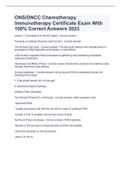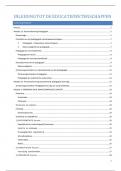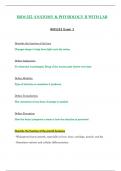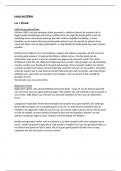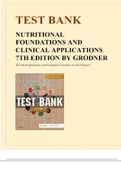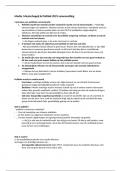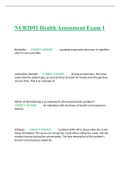Exam (elaborations)
ONS/ONCC Chemotherapy Immunotherapy Certificate Exam With 100% Correct Answers 2023
- Course
- Institution
Lesson 1: Foundations to Set the Stage - Correct answerFocusing on Cellular Structure and Function - Correct answerThe Normal Cell Cycle - Correct answer--The cell cycle refers to the ordered seres of processes of DNA replication and mitosis, or cell division -Cell nucleus regulates these process...
[Show more]
